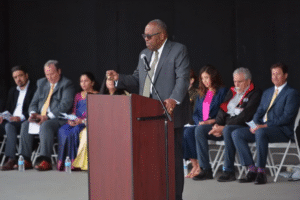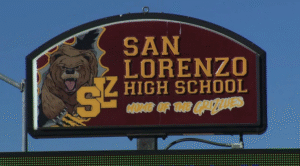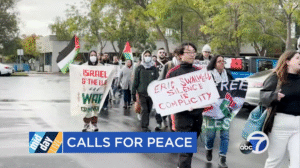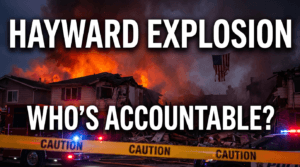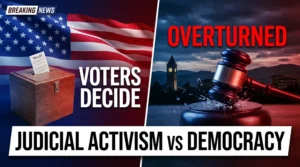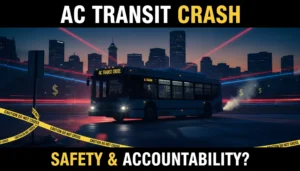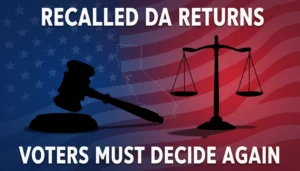Bridging the Gap: Sunol’s Historic Town Hall Sparks New Era of Community Engagement in Alameda County’s Forgotten Corners
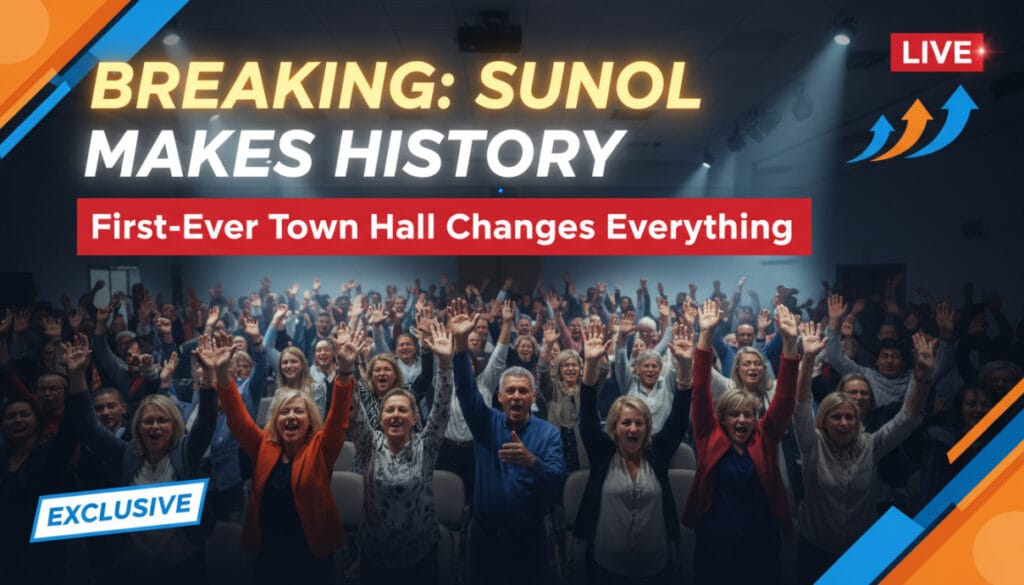
In the rolling hills of Sunol, where rural tranquility meets the complex realities of modern governance, a groundbreaking town hall meeting on September 23, 2025, marked a pivotal moment for one of Alameda County’s most overlooked communities. For the first time in the area’s history, residents gathered not just to voice concerns, but to fundamentally reshape how their voices are heard in the corridors of county power.
A First of Its Kind
The September 23 budget-input town hall represented more than just another community meeting—it was the inaugural event of its kind in Sunol, according to Lindsey Knight, an assistant in Supervisor David Haubert’s office. This historic gathering was part of a broader initiative by the Budget Justice Coalition in partnership with county supervisors to address the growing needs for community engagement and information gathering across Alameda County’s unincorporated areas.
The significance of this moment cannot be overstated. Sunol, nestled in the rural reaches of District 1, represents one of seven unincorporated communities in Alameda County, home to approximately 147,000 residents—roughly 10% of the county’s total population. Yet despite this substantial demographic, these communities have long operated in the shadows of county governance, lacking adequate mechanisms for meaningful participation in budget decisions that directly affect their daily lives.
The Invisible Communities
“There is nowhere near enough information for residents of the unincorporated areas to know how to participate,” explained Ana Rasquiza, a representative of the Budget Justice Coalition. This stark observation encapsulates a fundamental challenge facing unincorporated communities across the county: how do you engage with a government system that seems designed without you in mind?
The numbers tell a sobering story. Of Alameda County’s seven unincorporated communities—Ashland, Castro Valley, Cherryland, Fairview, Hayward Acres, San Lorenzo, and Sunol—only 3,000-4,000 residents live in the rural District 1 area that includes Sunol. Yet these residents contribute significantly to the county’s tax base while receiving what many perceive as disproportionately limited services and representation.
Claudia Albano, representing District 4 Supervisor Nate Miley’s office, posed a critical question that resonates throughout these communities: “If the County is providing services, especially social-net services to these areas, why do we have such poverty in these areas? There hasn’t been the attention to these unincorporated areas, so we’ve been trying to bring more structural changes to these communities.”
The Budget Justice Initiative
The September town hall was one of six meetings sponsored by the Budget Justice Coalition of Contra Costa in partnership with Alameda County supervisor offices. This coordinated effort represents a systematic approach to addressing long-standing inequities in how unincorporated communities interface with county government.
The coalition’s work extends beyond simple community outreach. Their goal is ambitious: to establish an annual process with Alameda County agencies ensuring that budget priorities are sensitive to community needs. This represents a fundamental shift from the current system, where unincorporated residents often find themselves navigating a complex bureaucracy without clear pathways for input.
The data gathered from all six meetings—covering both urban and rural unincorporated communities—will serve as the foundation for developing this new engagement framework. The findings will be presented to the Board of Supervisors and the Unincorporated Services Committee in December, potentially marking the beginning of a new era in county governance.
Voices from the Ground
The September 23 meeting employed a structured approach that proved both revealing and productive. Residents began by identifying macro influences affecting their community before drilling down to specific local manifestations of these broader challenges.
The concerns raised paint a picture of communities struggling with fundamental infrastructure and service delivery issues. Traffic problems plague narrow rural roads never designed for current usage patterns. Vandalism and illegal dumping reflect broader challenges with law enforcement coverage in remote areas. Outdated infrastructure strains under the demands of modern life, while poor coordination between county departments leaves residents feeling abandoned by the very government they fund through their taxes.
Ken Horton, a longtime Sunol resident, captured the frustration felt by many: “The county government needs to consider giving appropriate services to the rural areas for what the rural areas are putting into the county.” This sentiment reflects a broader perception that unincorporated areas contribute more in taxes than they receive back in services—a dynamic that has persisted for decades.
The FY 2025-26 Budget Context
The timing of these community engagement efforts coincides with the presentation of Alameda County’s FY 2025-26 budget update for Unincorporated Services, which outlines how the county provides municipal services to these areas. This $5.1 billion county budget represents both opportunity and challenge for unincorporated communities._
The budget document reveals the scope of services the county provides to unincorporated areas, from code enforcement addressing over 1,200 blight and zoning violations to neighborhood preservation efforts. However, as Rasquiza noted, nowhere in the 300-plus-page budget plan does it outline a clear process for how rural, unincorporated areas can meaningfully participate in budget development.
This gap represents more than administrative oversight—it reflects a fundamental disconnect between governance structures designed for incorporated cities and the realities of unincorporated community life. The county’s power to make and enforce ordinances in these areas is often limited, creating additional layers of complexity in service delivery and community engagement.
A Model for Change
The structured approach employed at the Sunol town hall offers a potential template for broader reform. Haldun Morgen, an outreach coordinator with the Alameda County Housing Provider Resource Center, attended both the Sunol meeting and a similar session in the Eden area. His observations highlight the potential of this new engagement model:
“I really like how this structure underscores the importance of going from the macro to the micro, and if we’re going to enact serious change in our communities, it’s going to be through this process.”
This methodology—moving from broad systemic issues to specific local impacts—allows communities to connect their daily experiences with larger policy decisions. It also provides county officials with actionable data about how broad policy decisions affect real people in specific places.
Looking Forward
The outcomes of the September 23 meeting extend far beyond the immediate concerns raised by Sunol residents. The prioritized list of issues developed through the structured community input process will join data from the other five meetings to form a comprehensive picture of unincorporated community needs across Alameda County.
More importantly, this initiative represents a potential model for ongoing community engagement that could fundamentally alter the relationship between unincorporated communities and county government. Rather than episodic crisis response, this approach envisions systematic, annual engagement that ensures community voices are heard before budget decisions are made, not after their impacts are felt.
The December presentation to the Board of Supervisors and Unincorporated Services Committee will be a crucial test of whether this grassroots engagement can translate into meaningful policy change. The success or failure of this initiative could determine whether other counties adopt similar approaches to unincorporated community engagement.
The Broader Implications
The Sunol town hall and the broader Budget Justice Coalition initiative represent more than local government reform—they embody a fundamental question about democratic participation in an era of complex governance structures. As California’s population increasingly concentrates in urban areas, unincorporated communities risk becoming further marginalized unless deliberate efforts are made to ensure their voices are heard.
The challenges facing Sunol and similar communities are not unique to Alameda County. Across California and the nation, unincorporated areas struggle with similar issues of representation, service delivery, and meaningful participation in governance decisions that affect their lives.
The success of this initiative could provide a roadmap for other jurisdictions grappling with similar challenges. Conversely, its failure could reinforce existing patterns of marginalization, leaving unincorporated communities to continue advocating for basic services and representation from the periphery of political power.
As the data from all six town halls is compiled and presented to county leadership, the residents of Sunol and other unincorporated communities await what could be a historic shift in how their voices are heard and their needs addressed. The September 23 town hall may well be remembered as the moment when Alameda County’s forgotten corners finally found their voice in the halls of power.
The path forward remains uncertain, but the foundation has been laid for a more inclusive and responsive approach to governance—one that recognizes that effective democracy requires not just the right to vote, but meaningful opportunities to participate in the decisions that shape daily life. For the residents of Sunol and communities like it, that opportunity may finally be at hand.




